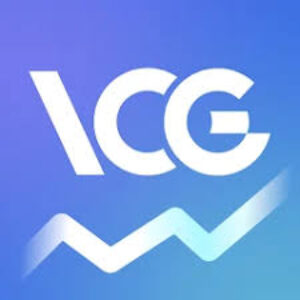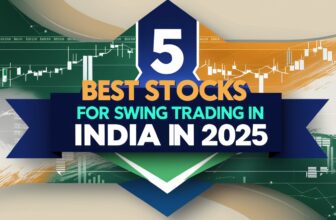
The foreign exchange market (or forex market) is the vast, decentralized marketplace where currencies are traded around the clock (except weekends). It underpins all cross-border commerce by allowing businesses and governments to convert one currency into another for trade and investment. In fact, global FX turnover is enormous: the Bank for International Settlements reports an average of about $7.5 trillion per day traded in April 2022. Such scale means that even small shifts in exchange rates can sway the prices of goods and services in international trade. At first glance, the currency market may seem purely speculative, but it plays a vital role in stabilizing and enabling trade: it sets the prices at which exporters and importers transact. As IMF Deputy Managing Director Gita Gopinath notes, many countries are now reassessing their reliance on the U.S. dollar for trade and reserves, a shift that could reshape global commerce. In short, the foreign exchange market is the lifeblood of global trade, feeding a constant flow of international business by “enabl[ing] currency conversion” and risk management.
Overview of the Foreign Exchange Market’s Impact on Global Trade
| Aspect | Key Insights | Impact on Global Trade | Notable Statistics |
|---|---|---|---|
| Market Scale & Structure | World’s largest financial market operating 24/5 across global trading centers (London 43%, US 20%, Asia-Pacific 17%) | Enables continuous currency conversion and price discovery for international commerce | $7.5 trillion daily turnover (2022) |
| Trading Instruments | FX swaps dominate ($3.8T/day), followed by spot trades ($2.1T/day), forwards ($1.1T/day), and options ($0.3T/day) | Provides hedging tools for businesses to manage currency risk in trade contracts | EUR/USD alone: $797B daily in London (25% of market) |
| Exchange Rate Effects | Currency weakening boosts export competitiveness but increases import costs; strengthening has opposite effect | Creates trade-offs between export advantage and import inflation | 10% currency change can significantly alter trade competitiveness |
| Risk Management | Forward contracts, swaps, and options allow businesses to lock in future exchange rates and manage payment timing | Reduces uncertainty in international contracts, encouraging cross-border trade | Risk management tools essential for $25+ trillion annual global trade |
| Market Volatility | High volatility increases trade risk and contract costs; excessive swings can reduce international commerce | Can discourage trade participation and increase hedging costs for businesses | Central banks intervene to maintain “orderly market conditions” |
| Currency Reserves | Countries hold reserves to ensure trade payment capability and defend currency stability | Builds confidence in trade partnerships and enables smoother international transactions | India’s reserves: Record $675B (August 2024) |
| Global Trade Fragmentation | Shift away from USD dominance and formation of currency blocs could reshape international commerce | Potential reduction in global trade efficiency and increased transaction costs | Europe relies on exports for nearly 20% of economy |
| Emerging Market Example | India’s rupee managed float with RBI intervention; active NDF market participation to prevent sharp moves | Balances export competitiveness with import cost management (especially oil) | India FX turnover: $6B (2000) → $60B (recent); Rupee down 3% in 2024 |
What Is the Foreign Exchange Market?
The foreign exchange market is a global, over-the-counter (OTC) currency marketplace where banks, businesses, governments, and investors buy and sell national currencies. In essence, it establishes exchange rates – the price of one currency in terms of another – through supply and demand. Foreign exchange meaning is literally the act of exchanging money from one country into the currency of another. This market is the world’s largest financial market, far exceeding even the stock and bond markets in size. It operates through a network of financial centers (London, New York, Tokyo, etc.) so that trading can continue 24 hours a day.

Because currencies are always traded in pairs, the FX market determines relative values: for example, how many euros one U.S. dollar can buy, or vice versa. The interbank and institutional traders in this market conduct huge volumes: by 2022, the daily average turnover was around $7.5 trillion. (For comparison, the New York Federal Reserve notes that FX turnover nearly doubled from $1.7 trillion in 2008 to $3.2 trillion in London alone by 2024, and continued growing globally.) In practical terms, this means that at any moment, some party somewhere is setting a price for every major currency pair. This continuous quoting and trading provides liquidity and continuous price discovery for international trade.
Key takeaways: The foreign exchange market is an OTC network of global trading centers. It is huge (>$7T daily), runs 24/5, and is essential for international currency conversion. The market’s main participants include big banks (the “interbank market”), multinational companies, central banks, and increasingly hedge funds and online retail traders. Through all these players, the market enables businesses to pay for imports or convert export earnings into domestic currency.
Types and Structure of the Foreign Exchange Market
The forex market has several components and instruments. Traders can transact spot (immediate delivery) currency trades, as well as derivatives like forwards, futures, options, and swaps. Each instrument serves a different purpose: for example, forward contracts lock in an exchange rate for a future date, while currency swaps involve exchanging principal and interest in different currencies. OTC forex swaps are by far the most traded instrument: in 2022 they averaged about $3.8 trillion per day, more than any other FX categor. (Spot trades were about $2.1T/day, forwards $1.1T, and options around $0.3T.) These types provide flexibility: corporations use forwards and swaps to manage payment dates, while speculators and hedgers use futures and options to lock in prices.
| Instrument | Avg. Daily Turnover (2022) | Purpose/Feature |
| Spot (cash) | ~$2.1 trillion | Immediate delivery trades; price discovery. |
| FX swaps | ~$3.8 trillion | Simultaneous buy/sell (often overnight financing). |
| Forwards | ~$1.1 trillion | Lock-in exchange rate for a future date. |
| Options | ~$0.3 trillion | Right, but not obligation, to exchange at set price. |
The structure of the FX market is highly decentralized. There is no single exchange; rather, trading happens via interbank networks, electronic platforms, and sometimes trading desks of big banks. Roughly speaking, the London market is largest (handling about 43% of turnover), followed by the United States (around 20%) and Asia-Pacific (17%). Major currency pairs – for example EUR/USD, GBP/USD, USD/JPY – dominate volume. In October 2024, EUR/USD alone saw about $797 billion in daily trades in London (roughly 25% of the market). This concentration means that shifts in a few key currencies can have outsized impact on trade values worldwide.
Functions of the Foreign Exchange Market
The forex market serves several key functions that directly support global trade:
- Currency Conversion: It enables international trade by providing the means to convert currencies. For example, an Indian importer buying goods from Germany can use the forex market to exchange rupees for euros. As Wikipedia notes, the FX market “assists international trade and investments by enabling currency conversion”.
- Price Discovery: It continuously sets exchange rates through supply and demand. Every transaction (even a small one) contributes to the relative price between two currencies. These prices feed into contracts and pricing of exports and imports worldwide.
- Hedging and Risk Management: Companies use FX derivatives to hedge their foreign exchange risk. For instance, an exporter can lock in a forward rate to ensure they know exactly how many rupees they will get for their dollars in three months. This function gives businesses certainty in cross-border contracts.
- Speculation and Liquidity: Traders and investors seeking profit also participate, providing liquidity. While speculation may introduce volatility, it also makes markets more liquid and helps absorb shocks. Importantly, even speculative flows can benefit trade: for example, when currencies weaken, they can stimulate export volumes (see below).
- Transfer of Purchasing Power: In a broader sense, the forex market transfers purchasing power between countries. A weaker currency can boost a nation’s exports (making them cheaper abroad), while a stronger currency makes imports cheaper domestically. This plays into global trade balances.
It is important to note that the forex market does not exist in isolation – it directly influences and is influenced by global commerce. For example, when commodity prices rise, countries exporting those commodities earn more foreign currency (increasing their FX supply). Accordingly, central banks and traders watch trade data closely, knowing that trade flows feed right back into currency values.
Key features of the FX market reflect these functions: it is highly liquid and fast-moving, with tiny bid-ask spreads and tight margins for dealers. Trading occurs 24 hours because as one financial hub closes, another on the globe reopens. The market is also global and near-ideal competition (no single regulator controls it), making it the “closest to the ideal of perfect competition”. These characteristics mean that new information (like a trade announcement or policy change) is quickly incorporated into exchange rates, which then instantly affects trade pricing.
Features and Importance of the Foreign Exchange Market
Several key characteristics make the forex market especially important:
- Massive Scale: By 2022, the average daily trading volume was roughly $7.5 trillion, dwarfing equities or bonds. Such scale provides deep liquidity: trades of any size can usually be executed without moving the market dramatically.
- Continuous Trading (24/5): The market operates around the clock on business days, because the major trading centers across different time zones hand off trading from Asia to Europe to the Americas. This ensures that global trade and investment can happen at any time, day or night.
- Decentralization: There is no single exchange or clearinghouse. Trading is OTC, which gives flexibility but also means the market is driven by private agreements and institutions.
- Variety of Instruments: Beyond spot, there are many derivatives (futures, forwards, options, swaps). This allows traders to manage almost any kind of currency risk, from simple future receipts to complex multi-currency hedges.
- Leverage and Technology: Forex trading often involves leverage (borrowing) to amplify positions. While this attracts speculators, it also adds risk and volatility. Modern FX trading is heavily electronic and automated, which increases speed but means that algorithmic trading can occasionally trigger sharp moves.
Importance: The FX market’s features translate into major importance for the global economy. For one, it facilitates international trade and investment by ensuring that money can flow across borders. No exporter could get paid or an importer could settle a purchase without the ability to switch currencies at a fair rate. Secondly, it serves as a barometer of economic health: currencies often reflect fundamentals like interest rate differentials and trade balances.
Also, the forex market underpins global monetary stability. Countries hold reserves (in dollars, euros, etc.) and use the FX market to manage exchange rate volatility. As the ECB’s Christine Lagarde cautions, changes in the global currency system can have big trade effects – Europe relies on exports for nearly a fifth of its economy, and “any change … that leads to lower world trade or fragmentation … will be detrimental”. This quote underscores how fragile the link is: if currency blocs form or trade is fragmented, economies could suffer.
In practical terms, businesses care about FX because exchange rate shifts can make or break trade deals. For example, in 2023 some analysts noted that a modest depreciation of China’s yuan could “help export performance, especially as global trade is shrinking”. In other words, a weaker currency can offset weak demand by making exports more attractive. Conversely, a sudden currency surge can harm exporters by making their goods too expensive. Therefore, exporters often hedge via forwards or options to lock in rates. These risk management functions of the FX market are crucial for the smooth operation of international commerce.
Impact on Global Trade
How exactly does the forex market influence global trade flows? The interplay can be seen in several ways:

- Exchange Rates and Competitiveness: If Country A’s currency weakens relative to Country B’s, A’s exporters gain a price advantage in international markets (since foreign buyers can get more A-currency goods for the same amount of their own money). Conversely, A’s importers pay more for foreign goods. This shift can balance trade deficits over time. However, the feedback is complex: Lagarde’s warning highlights that systemic shifts – like a currency bloc divorce – could shrink total trade.
- Volatility and Risk: High FX volatility makes international contracts riskier. For example, if firms fear large currency swings, they may demand currency clauses in contracts, raise prices to compensate for uncertainty, or even reduce cross-border deals. Thus, excessive volatility can slow trade. Here’s a paradoxical point: while some volatility is natural, markets need stability to thrive. The RBI’s motto (in India) is an example: it “intervenes occasionally… only for maintaining orderly conditions in the market by curbing excessive volatility”. By smoothing abrupt swings, the FX market (and central banks) help keep trade flowing.
- Hedging and Financing: The FX market provides tools (forwards, swaps) that let businesses fix a future exchange rate. This locking in of prices is vital for trade financing. In fact, global trade finance often depends on currency swaps: a bank might swap loans in one currency for loans in another to match export revenues. Such mechanisms reduce risk and encourage more trade. However, these also add costs; some developing exporters might find hedging expensive, which can influence how much they trade.
- Currency Reserves and Trade Policy: Central banks accumulate reserves and sometimes use them to defend currencies. For example, high reserves can give confidence to partners that a country can meet its trade payment obligations. In 2024, India’s reserves hit a record $675 billion, which helped the rupee remain relatively stable. Policymakers see the FX market as a tool: by buying or selling currency, they can influence trade competitiveness (though not without side effects).
It may sound complex – can currencies really sway multibillion-dollar trade flows? Consider this: after crises or policy shifts, countries often see trade patterns change. IMF research points out that since 2022, trade between U.S.-aligned and China-aligned blocs has faltered, partly due to political fractures and shifting currency ties. In everyday terms, an exporter might ask: “If my currency suddenly surges 10% overnight, how do I keep my prices competitive abroad?” This rhetorical question highlights a real issue. The answer lies in financial strategies and sometimes in government policy.
Also, FX dynamics can have contradictory effects: a very strong currency can on one hand signal a booming economy and cheap imports, but on the other hand hurt local exporters. Likewise, a weak currency helps exports but can stoke inflation by raising import costs. Businesses and countries navigate these opposing forces constantly. They may ask whether to let the market decide (free float) or to intervene. As Nobel economist Paul Krugman and others have argued, there is no perfect answer – each approach has trade-offs.
Summary of impacts: In short, the forex market affects global trade by determining prices, enabling or discouraging commerce through volatility, and providing the tools to manage currency risk. For example, analysts noted that “a weaker yuan helps exporters when they convert [dollar] receivables to yuan,” highlighting how firms rely on exchange rates in practice. Policies around currency – from peg to float – also shape how trade evolves. Thus, foreign exchange and trade are two sides of the same coin: each pays and receives in the other, driving the global economy.
Foreign Exchange Market in India
India’s forex market exemplifies many of these dynamics on a national scale. Under its current regime, the rupee floats but the Reserve Bank of India (RBI) intervenes to prevent excessive swings. Over the past decade, India’s FX turnover has grown dramatically: according to the BIS, average daily turnover leapt from about $6 billion in 2000 to roughly $60 billion in recent years. The market participants include major banks, corporates (especially importers like oil and gold buyers), and Foreign Institutional Investors (FIIs).
Even so, the rupee experienced notable fluctuations in 2024. By year-end, it had weakened about 3% against the US dollar. This fall was driven by factors like a strong dollar, higher oil prices, and trade deficits. Yet the rupee remained “among the least volatile currencies” of emerging markets, partly due to RBI’s active measures. As one currency strategist noted, “RBI was … intervening actively … in NDF markets to prevent sharp depreciation of the rupee”. In practice, India’s forex reserves (which reached a record $675B in August 2024) give it firepower to smooth volatility and ensure trade payments.
For Indian businesses and traders, the forex market in India means primarily trading INR currency derivatives on exchanges (NSE and BSE offer INR-dollar, INR-euro, etc. futures). Although direct retail forex trading is regulated, a variety of brokers offer currency services. Notably, platforms like Zerodha (via its currency futures), Upstox, ICICI Direct, and HDFC Securities are among the best forex brokers in India that provide access to currency futures and options. (Traders should always choose brokers that comply with SEBI/RBI rules.) These brokers typically list USD/INR, EUR/INR, GBP/INR, and JPY/INR contracts.
Key points for India: The rupee’s stability affects trade competitiveness. A cheaper rupee would boost exports but make imports costlier, impacting inflation. Given India’s oil dependence, a weaker rupee means more expensive fuel and higher import bills. The RBI’s approach – to “cushion volatility without targeting any specific exchange rate” – aims to balance these effects. In summary, India’s foreign exchange market has matured (with big turnover and deep reserves), and it plays the same fundamental role: it enables Indian exporters and importers to transact globally, while the RBI steps in when necessary to ensure smoother trade flows.
Conclusion
The foreign exchange market is a powerful force behind every international trade transaction. Its scale, liquidity and continuous price-setting allow goods, services, and capital to move across borders smoothly. However, this power can cut both ways: volatile currency swings can unsettle trade, while steady markets can encourage it. In today’s interconnected world, businesses and policymakers must therefore pay close attention to currency dynamics.
Principled foreign exchange policies—such as transparent interventions and the use of hedging tools—can help stabilize trade. Also, diversifying trade partners and invoicing currencies (for example, settling trade in euros or rupees instead of only dollars) may reduce dependence on any single currency. Conclusively, while companies cannot eliminate currency risk entirely, understanding the mechanisms of the forex market helps them manage exposures. As has been discussed earlier, the FX market both reflects and drives global commerce. Looking ahead, staying informed about monetary trends, central-bank actions, and geopolitical shifts will be crucial. In other words, those who learn to read the “heartbeat” of currency markets can use that insight to their advantage. The foreign exchange market may be complex, but it ultimately keeps the world trading.
FAQ
What are the main features and functions of the foreign exchange market?
The foreign exchange market is the world’s largest financial market, characterized by immense liquidity and 24/5 trading around the globe. It’s an OTC market (no central exchange) where currencies trade in pairs (like USD/EUR). Key functions include currency conversion for trade (allowing an importer to pay in the seller’s currency), price discovery (setting real-time exchange rates), hedging (using forwards or swaps to lock in future rates), and speculation (providing liquidity). Its importance lies in enabling international trade; without it, cross-border transactions would be cumbersome. In sum, the FX market provides a global price list for currencies, offers tools to manage exchange risk, and ensures that businesses can transact internationally.
How does the foreign exchange market influence global trade?
Exchange rates determined by the FX market directly affect exports and imports. A weaker local currency generally makes a country’s exports cheaper for foreigners, boosting trade, while making imports more expensive. Conversely, a strong currency can dampen exports. Volatility in FX markets can raise trade costs by forcing companies to hedge or include currency risk premiums. As ECB President Christine Lagarde noted, any shift that reduces overall trade (for instance, trade blocs or currency fragmentation) can harm economies, since many rely on exports for growth. In practice, traders pay close attention: for example, analysts have observed that “a weaker currency … can help export performance” during slowdowns. Thus, stable FX markets tend to foster smoother trade flows, whereas erratic FX moves introduce uncertainty and may shrink trade volumes.
What is the role of India’s Forex market, and who are the major participants?
India’s forex market operates under a managed float. The Rupee’s value is mostly market-determined, but the RBI “intervenes occasionally…only for maintaining orderly conditions…curbing excessive volatility”. In recent years the market has grown significantly (daily turnover rose from ~$6B in 2000 to ~$60B now). Key participants include banks, large exporters/importers, FIIs, and retail traders (through regulated derivatives). Top Indian brokers like Zerodha, Upstox, ICICI Direct and HDFC Securities provide access to INR currency futures (USD/INR, EUR/INR, etc.). The RBI’s frequent interventions (e.g. buying dollars when the Rupee weakens) aim to smooth sharp moves, helping businesses trade with more confidence. Overall, India’s FX market ensures that importers can pay for goods and exporters can convert earnings, with the RBI stepping in to stabilize the Rupee when needed.
















